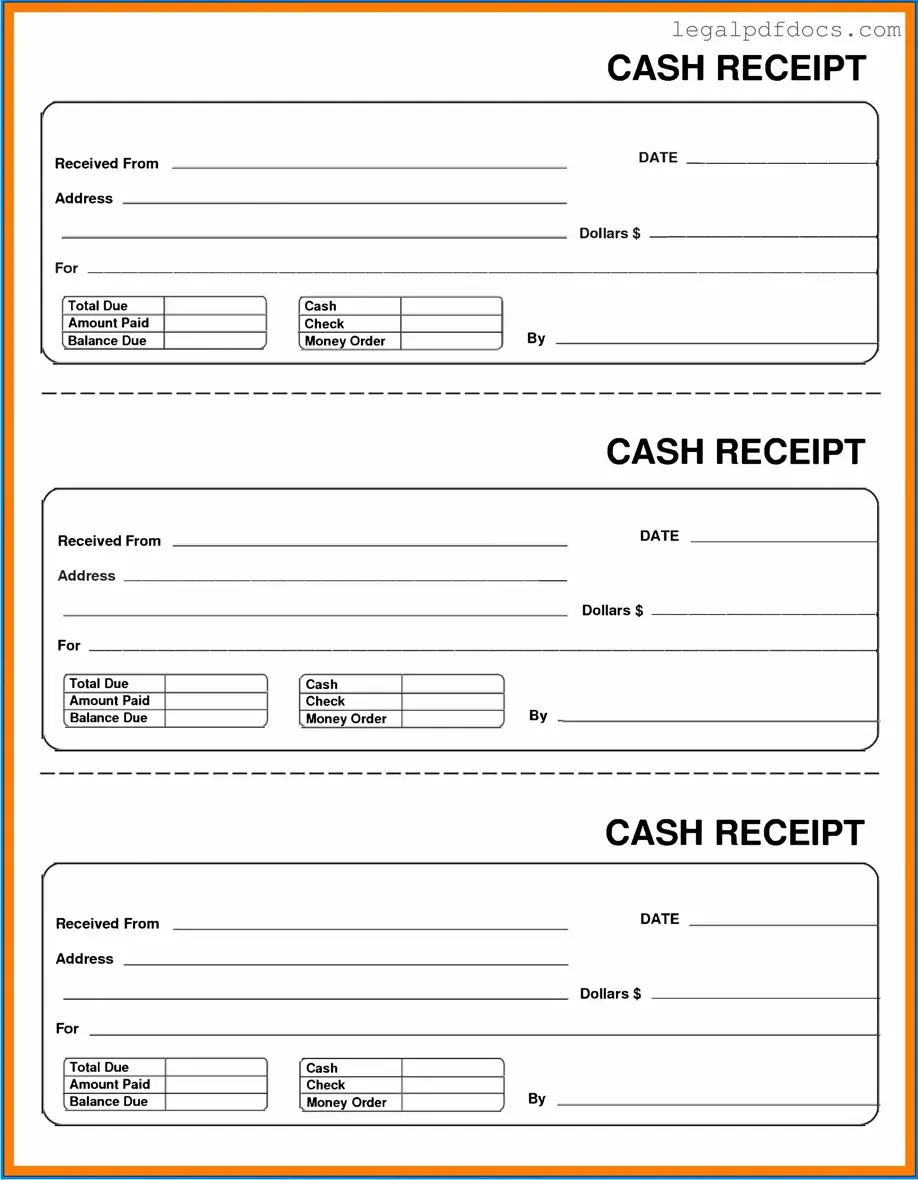Managing finances effectively is crucial for any business, and one essential tool that helps in this process is the Cash Receipt form. This form serves as a record of transactions where cash is received, providing both the business and the customer with important documentation. It typically includes details such as the date of the transaction, the amount received, the method of payment, and a description of the goods or services provided. By keeping a clear and accurate record, businesses can track their income, reconcile accounts, and maintain transparency with their clients. Additionally, a well-structured Cash Receipt form can help prevent disputes and provide a reliable reference for future financial audits. Understanding how to properly utilize this form can significantly enhance financial management and contribute to the overall success of a business.
